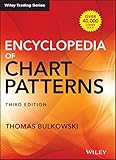
Sentiment: Bearish
Direction: Continuation
What Is The Bear Flag Chart Pattern?
A Bear Flag is a bearish chart pattern commonly found mid-trend as a continuation pattern.
The chart pattern consists of a sharp move downward in price to create a pole.
After support is reached, consolidation forms in a upward-sloping channel also called a flag.
The channel typically breaks to the downside creating renewed momentum for continuation.
How To Identify The Bear Flag Pattern?
You can identify a Bear Flag as soon as a strong bearish price action starts to bounce up and down to form resistance and support trend lines both sloping upwards. This creates a rectangular-shaped flag.
What Is The Psychology Behind The Chart Pattern?
The Bear Flag pattern is a continuation chart pattern that can provide traders with valuable insights into the market’s psychology.
It’s characterized by a sharp price decrease (the flagpole) followed by a period of consolidation (the flag).
The flag is typically an upward sloping channel, with the upper and lower trendlines parallel to each other.
The pattern typically takes several days to several weeks to form and is a sign of a potential continuation of the previous downtrend.
Traders interpret the pattern as a sign of a temporary pause in the market’s bearish sentiment, where sellers and buyers are evenly matched, but ultimately sellers regain momentum and push the price lower.
The psychology behind the bear flag pattern is that the sharp price decrease represents a period of strong selling pressure, where sellers are in control and pushing the price lower.
However, some sellers take profits, and buyers step in to take advantage of the low prices, causing the price to consolidate and form the flag.
The consolidation period represents a period of indecision in the market, where sellers and buyers are unsure of the direction of the trend.
As the pattern continues to form, sellers regain momentum and push the price lower again towards the previous low, and potentially beyond.
Once the price breaks out of the flag, it’s a signal that the downtrend is likely to continue, and traders may enter short positions.
How To Trade The Bear Flag Pattern?
To trade the Bear Flag pattern, traders typically wait for the price to break out of the flag with a strong volume surge.
The breakout should ideally occur on higher than average trading volume, as this confirms that there is significant selling pressure behind the move.
Traders may enter a short position once the price breaks out of the flag, with a stop loss placed above the upper trendline of the flag.
The profit target can be set based on the height of the flagpole, with the expectation that the price will move at least the same distance as the flagpole’s height in the direction of the breakout.
Alternatively, traders may wait for a pullback to the lower trendline of the flag before entering a short position.
This approach can provide a better risk-to-reward ratio, as the entry price is closer to the lower risk resistance level.
However, it may also result in missing out on some of the initial gains from the breakout. Ultimately, the best approach will depend on the trader’s risk tolerance, trading style, and market conditions.
It’s worth noting that the bear flag pattern can also result in a false breakout, where the price briefly breaks out of the flag before reversing course.
Traders should be aware of this possibility. Also be sure to use technical indicators and other tools to confirm the validity of the breakout. Access these tools at TradingView.
Bear Flag Performance Expectations Explained
Bear flags are usually expected to result in a bearish breakout from the bottom trendline.
You can get a potential target by taking a measurement from the previous breakout creating the flag pole, then projecting it from the bottom of the bear flag.


